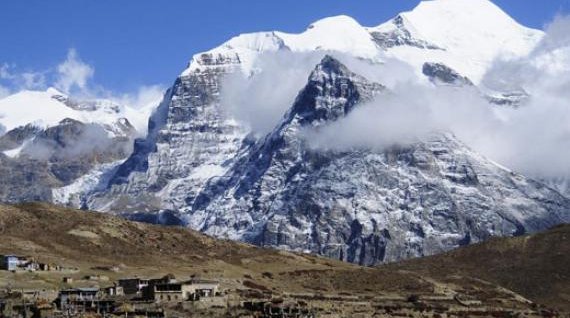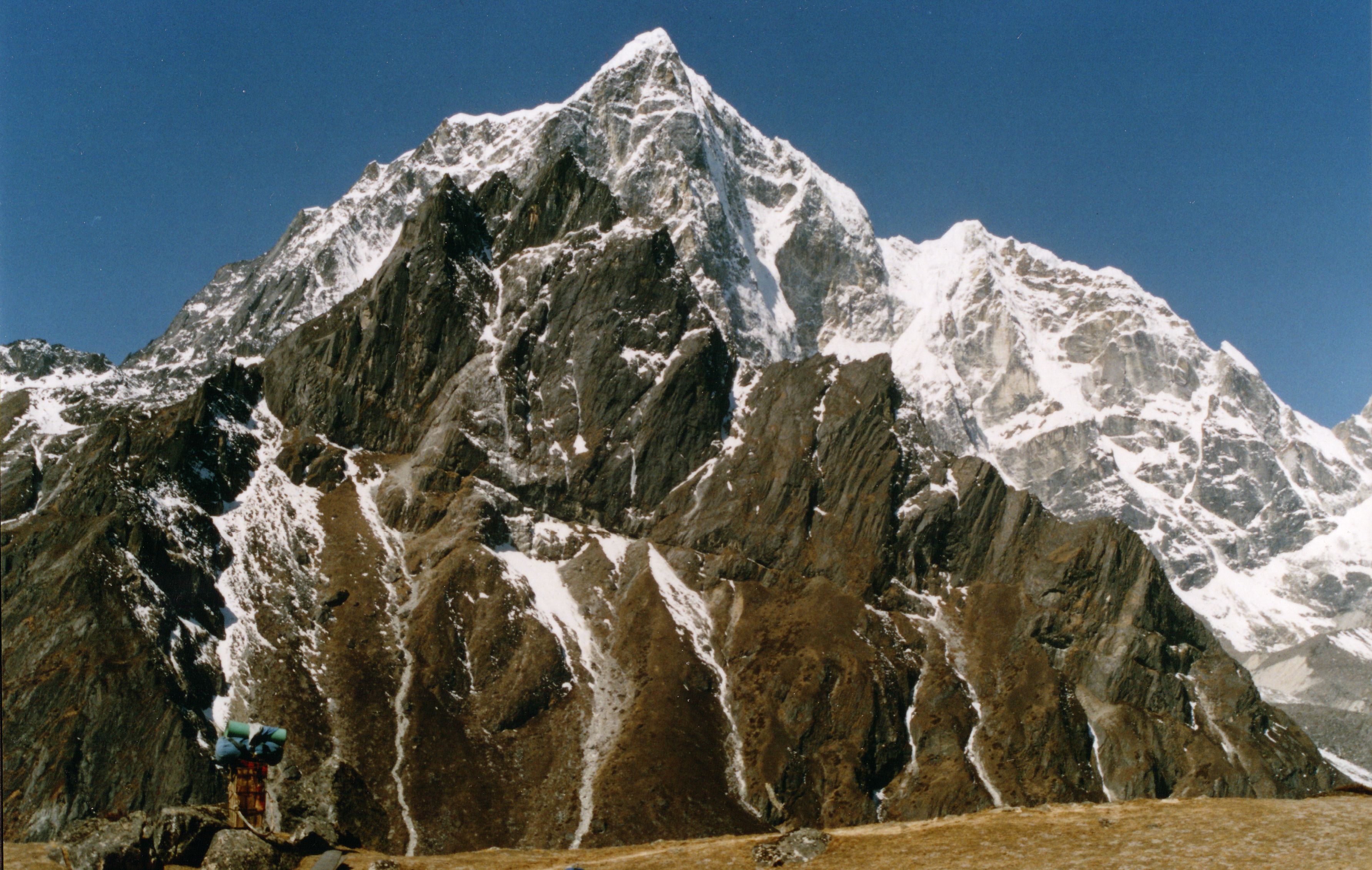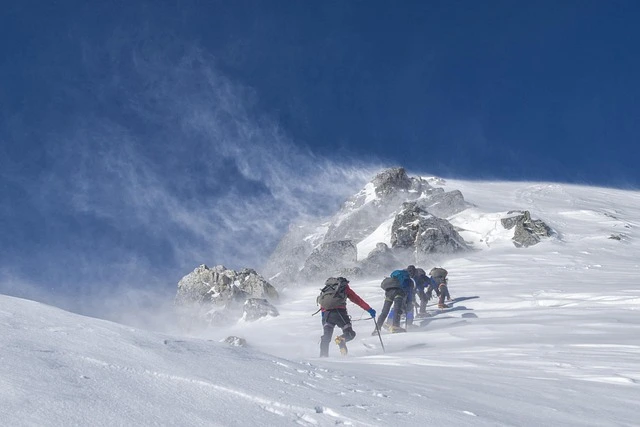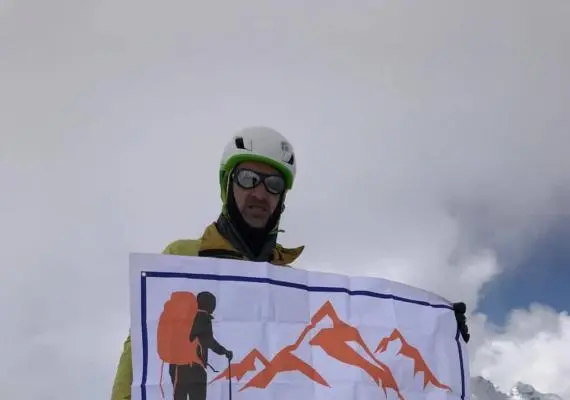Hidden between the popular Annapurna and Manaslu trekking circuits lies Nepal's best-kept secret: the Nar Phu Valley, a restricted area that remained closed to outsiders until 2002. This extraordinary trek takes adventurous beginners through medieval Tibetan villages frozen in time, where prayer flags flutter against 7,000-meter peaks and yak herders maintain traditions unchanged for centuries. With only 2,000 annual visitors compared to the Annapurna Circuit's 40,000+, the Nar Phu Valley offers something increasingly rare in the Himalayas – genuine solitude and authentic cultural encounters in one of Earth's last untouched mountain sanctuaries.
For physically fit beginners seeking more than just mountain views, this 12-day journey delivers the perfect balance of achievable challenge and profound reward. The trek culminates at Kang La Pass (5,320m), where panoramic views of Annapurna, Gangapurna, and Tilicho Peak reward your effort with one of Nepal's most spectacular mountain amphitheaters. While the mandatory guide requirement and restricted area permits add complexity, they also ensure safety and exclusive access to villages where traditional Tibetan Buddhist life continues undisturbed, making this the ideal choice for those ready to step beyond mainstream trekking into a truly transformative Himalayan adventure.
What is the Nar Phu Valley Trek?
The Nar Phu Valley Trek is a 12-day restricted area trek in Nepal's Annapurna region, reaching 5,320m at Kang La Pass. This moderate-to-challenging route explores remote Tibetan villages that remained closed to tourists until 2002, requiring special permits and mandatory guides for an authentic Himalayan adventure away from crowded trails.
Why Choose This Hidden Gem Over Popular Nepal Treks
The Nar Phu Valley offers what the mainstream Annapurna Circuit and Everest Base Camp treks cannot: complete cultural immersion in untouched Tibetan Buddhist communities. Nestled between the popular Annapurna and Manaslu regions, this restricted area preserves authentic traditions in the villages of Nar and Phu, where ancient monasteries and traditional stone houses remain unchanged by modern tourism.
Your journey encompasses dramatic contrasts rarely found on single treks:
- Majestic peaks including close-up views of Annapurna II (7,937m), III (7,555m), IV (7,525m), Gangapurna (7,455m), and Tilicho Peak (7,134m)
- Challenging high passes with Kang La at 5,320 meters offering 360-degree Himalayan panoramas
- Serene glaciers and dramatic narrow canyons carved by centuries of water flow
- Dense rhododendron and pine forests transitioning to stark alpine landscapes
- Traditional yak herding communities maintaining centuries-old lifestyles
Comparing Nar Phu Valley with Other Nepal Treks
Understanding how Nar Phu Valley compares to other popular treks helps you make an informed decision based on your fitness level, time constraints, and adventure goals.
Nar Phu Valley Trek:
- Duration: 12 days of trekking through restricted areas
- Maximum altitude: 5,320m at Kang La Pass
- Difficulty level: Moderate to challenging, suitable for fit beginners
- Annual visitors: Only 2,000 trekkers maintaining authentic experience
- Permit cost: $175-190 for restricted area plus ACAP
- Cultural authenticity: Very high with untouched Tibetan villages
- Teahouse standard: Basic but clean, authentic mountain lodges
- Best for beginners: Yes, with proper preparation and mandatory guide
Annapurna Circuit Trek:
- Duration: 15-20 days for complete circuit
- Maximum altitude: 5,416m at Thorong La Pass
- Difficulty level: Moderate, well-established trail
- Annual visitors: Over 40,000 creating busy trail experience
- Permit cost: $50 for ACAP and TIMS combined
- Cultural authenticity: Moderate due to commercialization
- Teahouse standard: Good with many comfort options
- Best for beginners: Yes, popular first trek choice
Everest Base Camp Trek:
- Duration: 12-14 days round trip
- Maximum altitude: 5,364m at base camp
- Difficulty level: Moderate to challenging
- Annual visitors: 35,000+ making trails crowded
- Permit cost: $50 for Sagarmatha National Park
- Cultural authenticity: Low to moderate in main villages
- Teahouse standard: Good with luxury options available
- Best for beginners: Yes, but expensive and crowded
Manaslu Circuit Trek:
- Duration: 14-18 days around the massif
- Maximum altitude: 5,213m at Larkya La Pass
- Difficulty level: Challenging with remote sections
- Annual visitors: 8,000 maintaining moderate crowds
- Permit cost: $100-145 for restricted area
- Cultural authenticity: High in traditional villages
- Teahouse standard: Basic to moderate
- Best for beginners: No, requires more experience
The Nar Phu Valley stands out for combining cultural authenticity with achievable challenge levels. While slightly more expensive due to restricted area permits, the dramatic reduction in crowds and preserved Tibetan culture provide value that mainstream treks cannot match.
Is the Nar Phu Valley Trek Suitable for Beginners?
Understanding the Challenge Level
The Nar Phu Valley Trek sits firmly in the "moderate to challenging" category, requiring honest self-assessment from prospective trekkers. While not recommended for complete trekking novices with zero hiking experience, physically fit beginners with determination and proper preparation can absolutely succeed on this adventure.
Key challenges beginners must prepare for:
- High altitude exposure with multiple days above 3,500m and Kang La Pass at 5,320m
- Daily walking duration of 5-8 hours on rugged, uneven terrain
- Remote locations with basic facilities and limited emergency evacuation options
- Mental resilience requirements due to isolation and limited connectivity
- Variable weather conditions including potential snow on high passes
Physical Fitness Requirements
Success requires dedicated preparation starting 8-10 weeks before departure. Your training program should emphasize cardiovascular endurance through hiking, stair climbing, or cycling at least 4 days weekly, progressively building to 3-4 hour sessions.
Essential fitness benchmarks before attempting:
- Ability to hike 6 hours carrying a 10kg daypack
- Comfortable ascending 1,000m elevation gain in a single day
- Core strength for balance on uneven, rocky terrain
- Mental stamina for consecutive days of physical exertion
- Resting heart rate below 70 bpm (indicates good cardiovascular fitness)
Trek Difficulty Calculator
Use this simple assessment to determine your readiness:
- Can you climb 50 flights of stairs without stopping? (Yes = 20 points)
- Do you exercise 4+ times weekly? (Yes = 20 points)
- Have you hiked above 3,000m before? (Yes = 20 points)
- Can you carry 10kg for 2+ hours? (Yes = 20 points)
- Are you comfortable with basic accommodation? (Yes = 20 points)
Score interpretation:
- 80-100 points: Well-prepared for Nar Phu Valley
- 60-80 points: Need 4-6 weeks additional training
- Below 60 points: Consider easier trek first
2025 Permits and Regulations: Latest Updates
Understanding Restricted Area Requirements
The Nar Phu Valley's restricted status preserves its unique Tibetan Buddhist culture while managing tourism impact near the sensitive Tibet border. New 2025 regulations have introduced stricter environmental protocols and updated permit fees.
Two essential permits for 2025 (Updated Prices):
- Nar Phu Valley Restricted Area Permit (RAP): $100 USD (Sept-Nov) or $75 USD (Dec-Aug) for first 7 days, then $15 USD per additional day
- Annapurna Conservation Area Project (ACAP) Permit: NPR 3,000 for foreign nationals, NPR 1,000 for SAARC nationals
New 2025 Regulation Changes
Important updates effective from January 2025:
- Mandatory GPS tracking devices for all groups entering restricted areas
- Increased environmental deposit of $50 (refundable upon proper waste disposal)
- Required comprehensive insurance verification at permit checkpoints
- New drone regulations: Complete ban without special photography permits ($500)
- Stricter camping restrictions outside designated areas
Permit Application Process
Only registered Nepali trekking agencies can obtain restricted area permits, simplifying the process but requiring advance planning. Applications now require submission 7 days before trek start date.
Required documentation (2025 updates):
- Passport with 6+ months validity
- Two passport photos (now must be less than 6 months old)
- Valid Nepal tourist visa
- Comprehensive travel insurance policy (must explicitly state coverage above 5,000m)
- Detailed day-by-day itinerary
- Emergency contact information
- Proof of guide/agency booking
Where permits are processed:
- Kathmandu: Nepal Tourism Board, Pradarshani Marg (9am-5pm except holidays)
- Pokhara: Nepal Tourism Board, Lakeside (10am-5pm except holidays)
- Besisahar: ACAP Entry Permit Counter (10am-5pm except holidays)
Best Time to Trek: Month-by-Month Weather Guide
Spring Season (March to May) - Optimal for Beginners
Spring offers the ideal combination of stable weather and moderate temperatures for beginners tackling high altitude for the first time.
March: Early spring with crisp mornings (-8°C to 12°C). Trails less crowded but higher passes may have snow. Rhododendrons beginning to bloom at lower elevations.
April: Peak spring conditions (−5°C to 18°C). Full rhododendron bloom creating spectacular forest colors. Most stable weather of the year with 80% clear days.
May: Warming temperatures (0°C to 22°C) but increasing afternoon clouds. Last chance before monsoon. Wildlife most active including blue sheep and Himalayan birds.
Autumn Season (September to November) - Peak Visibility
September: Post-monsoon freshness (2°C to 20°C). Trails quieter as season begins. Occasional rainfall early month but clearing rapidly.
October: Perfect conditions (-3°C to 18°C). Crystal-clear mountain views with visibility exceeding 100km. Peak season means busier trails but still uncrowded compared to mainstream treks.
November: Cooling temperatures (-8°C to 15°C). Exceptional mountain clarity for photography. Harvest festivals in villages provide cultural experiences.
Winter Season (December to February) - Expert Only
December: Cold but clear (-15°C to 10°C). Kang La Pass becomes technical requiring crampons. Many teahouses close for season.
January: Extreme cold (-18°C to 8°C). Heavy snowfall can block passes for days. Only for experienced winter trekkers with full mountaineering gear.
February: Gradual warming (-12°C to 12°C). Passes may reopen late month. Spectacular snow-covered landscapes but challenging conditions persist.
Monsoon Season (June to August) - Not Recommended
June-August: Daily rainfall with 70% cloudy days. Trails become treacherous with landslide risks. Leeches prevalent in forests. Mountain views rare. Avoid completely as a beginner.
Essential Packing List: Complete Gear Guide
Clothing System - The Layering Strategy
Base Layers (Next to Skin): The foundation of comfort starts with moisture management. Merino wool or synthetic materials wick sweat away preventing dangerous cooling.
- 3 thermal tops (varying weights: lightweight for walking, midweight for camp, heavyweight for summit day)
- 2 thermal bottoms (one midweight, one heavyweight)
- 5-6 pairs moisture-wicking underwear (avoid cotton completely)
- 3-4 sports bras for women (high support critical for rough terrain)
Insulation Layers (Warmth Retention): Trapped air provides insulation – multiple thin layers beat single thick ones.
- 200-weight fleece jacket for active warmth
- 650+ fill power down jacket for rest stops and evenings
- Insulated vest for core warmth without bulk
- 2 long-sleeve trekking shirts (sun protection with ventilation)
- 1 spare fleece or wool pullover
Outer Shell (Weather Protection): Your shield against wind, rain, and snow.
- Gore-Tex or equivalent waterproof/breathable jacket with hood
- Waterproof trousers with full-length side zips
- Softshell jacket for wind without rain
- 3 trekking pants (2 regular, 1 insulated for summit day)
Technical Gear and Equipment
Footwear System: Your feet carry you to success – invest in quality.
- Waterproof trekking boots (broken in with 50+ km walking)
- Camp shoes/sandals for teahouse comfort
- 5 pairs merino wool trekking socks (varying thickness)
- 2 pairs liner socks for blister prevention
- Gaiters for snow/debris protection
Sleep System Components: Quality sleep aids acclimatization and recovery.
- Four-season sleeping bag rated to -20°C (down or synthetic)
- Silk or fleece sleeping bag liner (adds 5°C warmth)
- Inflatable camping pillow or pillowcase to stuff with clothes
- Optional: lightweight sleeping pad for extra insulation
Backpack Configuration:
- 40-50L backpack for daily carry (with rain cover)
- 20-30L summit day pack (lightweight for pass crossing)
- 70-100L duffel bag for porters (usually provided by agency)
- Multiple dry bags for organization (electronics, clothes, toiletries)
- Carabiners for external attachment
Health, Hygiene, and Medical Supplies
Comprehensive First Aid Kit: Altitude and remoteness demand preparation for various scenarios.
- Diamox (125mg twice daily for prevention, consult doctor)
- Ibuprofen and paracetamol for pain/fever
- Broad-spectrum antibiotics (Ciprofloxacin or Azithromycin)
- Anti-diarrheal medication (Loperamide)
- Throat lozenges and cough suppressant
- Blister treatment (Compeed, moleskin, tape)
- Elastic bandage for sprains
- Thermometer for fever monitoring
- Oximeter for oxygen saturation checks
Hygiene Essentials: Limited washing facilities require creative solutions.
- Biodegradable soap and shampoo (small bottles)
- Quick-dry microfiber towel
- Wet wipes (2-3 packs for "showers")
- Hand sanitizer (multiple small bottles)
- Toilet paper (4 rolls minimum)
- Feminine hygiene products (1.5x normal needs)
- Toothbrush, toothpaste, floss (travel sizes)
- Nail clippers and file
Electronics and Navigation
Essential Electronics:
- Smartphone with offline maps downloaded (Maps.me, ViewRanger)
- Camera with extra batteries (cold drains power 50% faster)
- Headlamp plus backup (200+ lumens recommended)
- Power bank 20,000mAh minimum
- Solar charger for extended autonomy
- Universal adapter for Nepal (Type C, D, M)
- Waterproof cases for all electronics
Budget Calculator Tool
Use this interactive budget calculator for accurate planning:
Basic Costs:
- Trek package (12 days): $1,100-1,400
- International flights: $800-1,500
- Travel insurance: $150-300
- Nepal visa: $50
Variable Costs:
- Equipment purchase/rental: $100-500
- Hot showers (×10): $30-50
- Device charging: $20-40
- Snacks and drinks: $150-250
- WiFi access: $30-50
- Tips for guide/porter: $100-150
- Kathmandu accommodation/meals: $100-200
- Emergency fund: $300-500
Total Budget Range: $2,880-4,490
Budget Tip: Book during shoulder season (early March or late November) for 20-30% savings on package costs.
Accommodation and Food: Setting Realistic Expectations
Teahouse Standards Through the Trek
Accommodation quality decreases with altitude and remoteness. Understanding this progression helps set appropriate expectations and appreciation for available facilities.
Koto (Last Comfort Zone): The final night of relative luxury offers private rooms with attached bathrooms (though hot water isn't guaranteed). Electricity runs until 9pm, WiFi works sporadically, and the menu includes pizza alongside dal bhat. Enjoy it – standards drop dramatically tomorrow.
Dharmasala to Kayang (Basic but Adequate): Shared twin rooms with plywood walls providing minimal privacy. Communal squat toilets require headlamp navigation at night. Solar panels provide few hours of charging opportunity. Menus shrink to essential items with prices increasing 20% per day of remoteness.
Phu and Nar Villages (Authentic Simplicity): Stone buildings with thick walls provide surprising insulation. Rooms contain simple wooden platforms with thin mattresses. The communal dining room's yak-dung stove becomes the social hub where everyone gathers for warmth. Running water may freeze overnight. This is authentic Himalayan living.
High Camps (Survival Mode): Nar Phedi and Kang La Base Camp offer shelter, nothing more. Stone huts or tents protect from wind. Toilets are designated rocks behind boulders. Water comes from streams requiring purification. The discomfort becomes part of the adventure story.
Food Realities and Strategies
Menu diversity decreases with altitude while prices increase. Understanding available options helps maintain energy and morale.
Breakfast Options (6:30-8:00am):
- Porridge (oats or tsampa) with honey - best energy value
- Eggs (fried, boiled, scrambled, omelet) - protein boost
- Tibetan bread with jam/honey - carbohydrate loading
- Pancakes with apple/honey - morale booster
- Muesli with hot milk - western comfort
Lunch Selections (12:00-1:00pm):
- Vegetable noodle soup - hydration plus calories
- Fried rice/noodles - quick energy
- Momos (dumplings) - local favorite
- Cheese sandwich - simple but satisfying
- Energy bars from home - backup option
Dinner Mainstays (6:00-7:00pm):
- Dal Bhat - unlimited refills make this best value
- Pasta with tomato/cheese sauce - comfort food
- Pizza (lower altitudes only) - surprising quality
- Curry with rice - warming and filling
- Soup plus bread - light option for altitude-affected appetite
Hydration and Beverages:
- Tea (black, mint, ginger, lemon) - NPR 50-150
- Coffee (instant only) - NPR 100-200
- Hot chocolate - NPR 150-250
- Soft drinks (Coke, Fanta) - NPR 200-400
- Beer (until Koto only) - NPR 400-600
- Boiled water - NPR 100-300 per liter
Health and Safety: Comprehensive Risk Management
Understanding Altitude Sickness in Detail
Acute Mountain Sickness (AMS) affects 50-60% of trekkers ascending above 4,000m regardless of fitness level. Understanding progression helps recognize when to descend.
Mild AMS (Common and Manageable):
- Headache responding to painkillers
- Slight nausea without vomiting
- Mild fatigue beyond normal tiredness
- Difficulty sleeping despite exhaustion
- Treatment: Rest, hydrate, light food, monitor
Moderate AMS (Concerning, Requires Action):
- Severe headache unresponsive to medication
- Persistent vomiting preventing fluid retention
- Extreme fatigue requiring assistance walking
- Confusion or coordination loss
- Treatment: Immediate descent 500m minimum
Severe AMS/HACE/HAPE (Life-Threatening Emergency):
- Inability to walk straight line
- Confusion about location/identity
- Fluid in lungs causing breathing difficulty
- Coughing pink frothy sputum
- Treatment: Emergency evacuation required
Prevention Strategies That Work
Acclimatization Rules:
- Ascend maximum 400m sleeping altitude daily above 3,000m
- Include rest day every 1,000m elevation gain
- "Climb high, sleep low" principle when possible
- Never ascend with symptoms present
Hydration Protocol:
- 4-5 liters daily minimum
- Clear urine indicates adequate hydration
- Avoid alcohol completely above 3,000m
- Electrolyte supplements aid water retention
Diamox Consideration:
- 125mg twice daily starting 24 hours before altitude
- Reduces AMS incidence by 30-50%
- Side effects: tingling extremities, frequent urination
- Consult physician before use
Comprehensive Insurance Requirements
Standard travel insurance often excludes high-altitude trekking. Verify coverage explicitly includes:
Medical Coverage:
- Emergency treatment at altitude
- Helicopter evacuation to Kathmandu
- Hospitalization expenses in Nepal
- Medical repatriation to home country
- Coverage ceiling minimum $100,000
Trek-Specific Coverage:
- Trekking to 6,000m altitude
- Restricted area access
- Remote location rescue
- Trip cancellation/interruption
- Lost or delayed baggage
Recommended Providers:
- World Nomads (comprehensive adventure coverage)
- Global Rescue (specialized evacuation services)
- IMG Global (high-altitude specific policies)
- True Traveller (budget-friendly options)
Emergency Protocols and Communication
Emergency Contact Chain:
- Guide initiates emergency protocol
- Agency contacts insurance provider
- Helicopter dispatch from Kathmandu (weather permitting)
- Evacuation to nearest safe altitude
- Transfer to Kathmandu hospital
Communication Options:
- Local SIM card (Ncell/NTC) - coverage until Koto
- Satellite phone (guide carries) - emergency only
- InReach/SPOT device - personal rental option
- Teahouse phones - expensive but available
Cultural Etiquette: Respecting Local Traditions
Buddhist Practices and Protocols
The Nar Phu Valley maintains strong Tibetan Buddhist traditions requiring respectful behavior from visitors.
Monastery Etiquette: Always remove shoes before entering religious buildings. Walk clockwise around all Buddhist structures including monasteries, chortens, and mani walls. Photography inside monasteries requires explicit permission. Donations are appreciated but never mandatory. Sit lower than Buddha statues and monks showing respect for religious hierarchy.
Prayer Wheel Protocol: Spin prayer wheels clockwise while passing on the left side. Each rotation sends prayers to heaven according to belief. Large wheels at monastery entrances should be spun three times. Handheld wheels carried by elderly villagers deserve respectful distance.
Village Interaction Guidelines
Home Visits: Remove shoes before entering any home. Accept offered tea even if just symbolic sip. Sit where directed avoiding pointing feet at people or altars. Gifts of tea, sugar, or school supplies appreciated more than money.
Photography Ethics: Always ask permission before photographing people, especially women and children. Offer to share photos via email when possible. Avoid photographing religious ceremonies without explicit invitation. Never photograph military installations or border areas.
Supporting Local Economy Responsibly
Direct Support Methods:
- Purchase handicrafts directly from makers not middlemen
- Stay in locally-owned teahouses when available
- Hire additional local porters if needed
- Buy yak wool products from village women
- Contribute to monastery restoration funds
Avoiding Harmful Practices:
- Never give money or sweets to children (encourages begging)
- Don't buy antique artifacts (likely stolen from monasteries)
- Avoid single-use plastics completely
- Respect wildlife viewing distances
- Stay on designated trails preventing erosion
Solo Female Trekking Considerations
Safety Strategies for Women
The Nar Phu Valley's remoteness actually enhances safety for solo female trekkers through mandatory guide requirements and limited access.
Accommodation Arrangements: Request single rooms when available (small supplement applies). Position sleeping bag against door for psychological security. Carry portable door alarm for peace of mind. Choose teahouses with female staff when possible.
Cultural Dress Code: Dress modestly covering knees and shoulders in villages. Avoid tight or revealing clothing even while trekking. Carry sarong for changing or washing privacy. Wear wedding ring to avoid unwanted attention (even if unmarried).
Health Considerations: Pack extra feminine hygiene products (limited availability). Menstrual cup reduces waste management issues. UTI prevention antibiotics recommended. Birth control can regulate timing if preferred.
Comparative Analysis: Nar Phu vs Other Restricted Areas
How Nar Phu Ranks Among Nepal's Restricted Treks
Versus Upper Mustang: Upper Mustang offers easier trekking with motorable roads but less authentic experiences. Nar Phu provides superior mountain views and genuine remoteness. Cost similar but Nar Phu includes dramatic pass crossing. Choose Mustang for culture and ease, Nar Phu for adventure.
Versus Tsum Valley: Tsum Valley focuses purely on cultural immersion without high passes. Nar Phu combines culture with adventure elements. Both preserve authentic Tibetan Buddhism. Choose Tsum for meditation retreats, Nar Phu for diverse experiences.
Versus Dolpo Region: Dolpo requires 3+ weeks and extreme remoteness. Nar Phu offers similar cultural authenticity in shorter timeframe. Both feature dramatic landscapes and wildlife. Choose Dolpo for ultimate isolation, Nar Phu for accessibility.
Training Program: Detailed 8-Week Schedule
Weeks 1-2: Building Foundation
Start conservatively preventing injury while establishing routine.
Week 1:
- Monday: 30-minute flat walk at comfortable pace
- Wednesday: 45-minute walk including gentle hills
- Friday: 30-minute walk plus 15 minutes core exercises
- Weekend: 2-hour hike with 200m elevation gain
Week 2:
- Monday/Wednesday/Friday: 45-minute walks with hills
- Tuesday/Thursday: 20 minutes strength training (squats, lunges)
- Weekend: 3-hour hike with 300m elevation gain
Weeks 3-4: Increasing Intensity
Build cardiovascular endurance and climbing strength.
Daily Schedule:
- 5 days cardio: 60 minutes including significant hills
- 2 days strength: Focus on legs and core
- Weekend long hike: 4 hours with 500m gain
- Begin carrying 5kg backpack on all activities
Weeks 5-6: Altitude Simulation
Prepare body for sustained effort in thin air.
Training Elements:
- Stair climbing sessions: 45 minutes continuous
- Weekend hikes: 5-6 hours with 10kg pack
- Practice with trekking poles on varied terrain
- Add interval training for cardiovascular efficiency
Weeks 7-8: Peak and Taper
Maximum training load followed by recovery.
Week 7 (Peak):
- Daily 90-minute training sessions
- One 8-hour hike with full gear
- Practice everything: clothing layers, pack organization, pole use
Week 8 (Taper):
- Reduce to 30-45 minute easy sessions
- Focus on stretching and flexibility
- Prepare mentally through visualization
- Rest completely 2 days before departure
Conclusion: Your Hidden Himalayan Adventure Awaits
The Nar Phu Valley Trek stands as Nepal's last frontier for adventurous beginners seeking authentic experiences beyond tourist trails. This 12-day journey through restricted valleys offers unparalleled cultural immersion in ancient Tibetan communities while challenging you with high passes and dramatic landscapes that few will ever witness. Success lies not in previous trekking experience but in thorough preparation, realistic expectations, and embracing the adventure spirit. The mandatory guide requirement, while adding cost, ensures safety and deeper cultural understanding that transforms a simple trek into a life-changing journey through one of Earth's last untouched mountain sanctuaries.
For those ready to step beyond comfort zones and discover Nepal's hidden treasures, the Nar Phu Valley promises memories that outlast any photograph. The untouched villages of Nar and Phu, genuine hospitality of Tibetan communities, and stunning mountain panoramas from Kang La Pass reward every challenging step with experiences unavailable on crowded commercial routes. Begin your preparation today – train consistently for eight weeks, research thoroughly, and book with reputable agencies prioritizing safety and cultural respect. The hidden valleys await, ancient and authentic, ready to reward your courage with adventures that define a lifetime.
Ready to explore Nepal's hidden gem? Contact Himalayan Hero Adventures today:
📧 Email: [email protected]
📱 WhatsApp: +9779801127073
🌐 Website: himalayanhero.com
Related Hidden Valley Treks:
Essential Resources:





